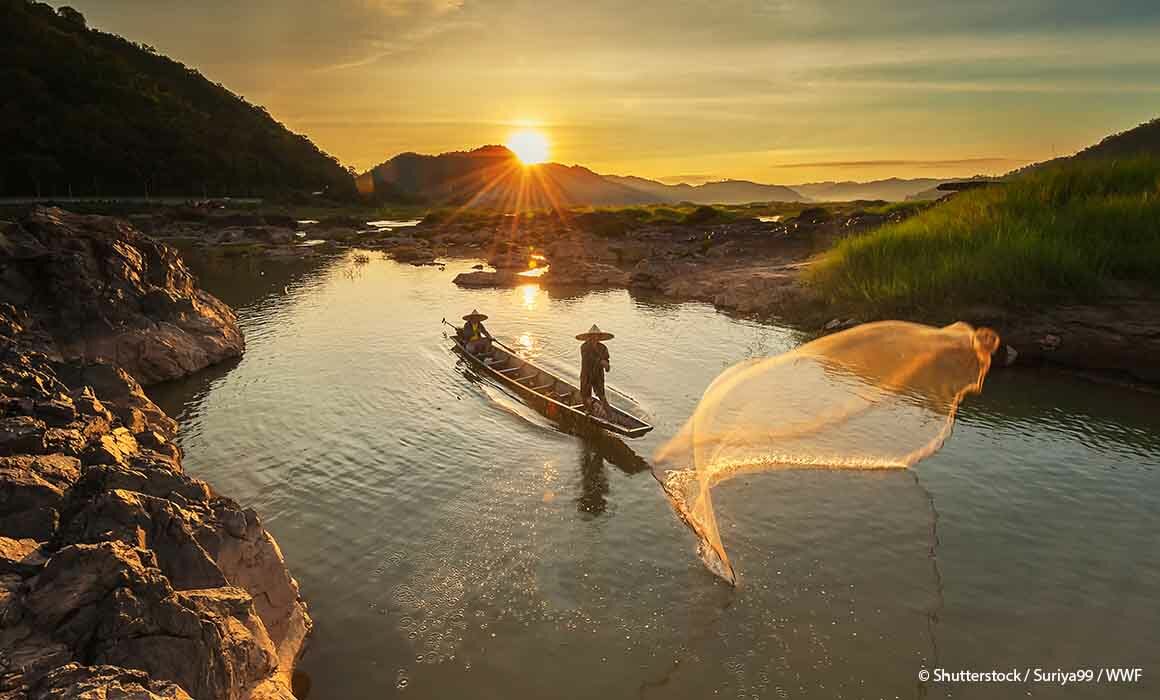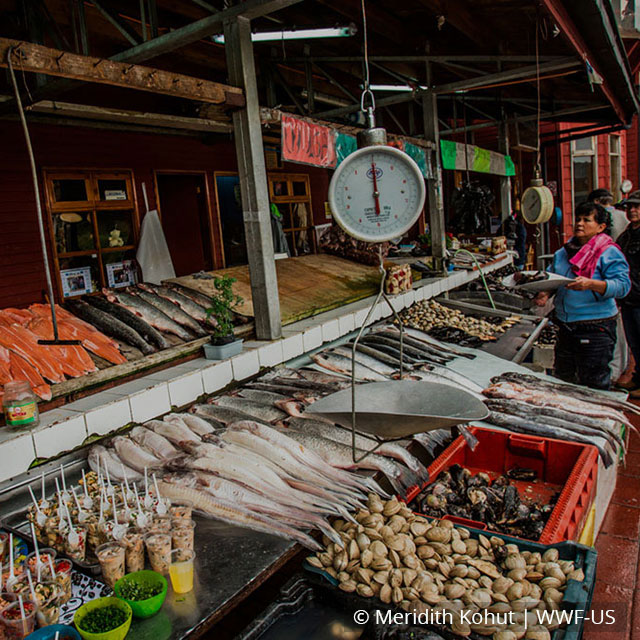A new platform aims to get ahead of the curve with data and artificial intelligence.
WWF is developing innovative programs at the intersection of climate change, ocean health, and peace and security. Our Oceans Futures work offers predictive analytics for early warning, strategic planning, and preventive conservation solutions that global maritime security and enforcement organizations can use to build a science-driven and networked approach to unsustainable marine resource extraction.
As part of this programming, WWF will also leverage its agency, political influence, policy development experience, science, and government relations capabilities to build and advocate for prioritizing, implementing, and funding ocean solutions.
Because when oceans thrive, the world is more peaceful.
A nexus of maritime threats
There’s never been a moment with more opportunity for transformation in seafood supply chains than the one that exists right now. Unfortunately, that opportunity comes because of the many challenges facing fisheries and aquaculture farms.
The complex global trade in fish commodities is rife with risks from external threats that could throw a company off course. Add climate change to the mix, which is already forcing wild fish populations to shift, and supply chains are pressed to keep up.
“The impacts of climate change on terrestrial wildlife are fairly visible, but what we can’t see as clearly are the countless populations of fish migrating away from their traditional ranges to survive in a changing climate,” said Dr. Sarah Glaser, Senior Director of Oceans Futures at WWF.
“This migration is cause for concern. Hundreds of millions of people who depend on fish are already losing sources of food and income due to shifting stocks. Add existing threats of overfishing, illegal fishing, bycatch, and habitat destruction, and the ocean’s bounty grows increasingly unstable,” adds Glaser.
As a conservation organization, WWF has a goal of maintaining balance in fisheries and marine ecosystems in seascapes around the world. Predicting what might happen in the future is one way to get ahead of the curve. This is another case where what’s good for conservation could be useful for business planning, too.
The Oceans Futures platform
Our Oceans Futures platform will integrate existing climate and fisheries models with emerging science and data on the causes of fisheries conflict to predict the location of future conflict hot spots. Users from the national security, seafood industry, and conservation sectors can explore the platform to understand how to design strategy and direct resources toward reducing the risk of conflict.
For industry, the platform will inform the deployment of blue food and market-based solutions and investments for the global seafood sector and ESG financial investments. Using data and artificial intelligence, seafood companies can also identify areas of potential conflict and human rights abuse, enabling them to responsibly source fish stocks.
These innovative tools will assist downstream actors by providing information that will help them to plan their procurement and supply chain operations more effectively. These tools will help to ensure a consistent supply of seafood products to meet consumer demand and reduce the risk of shortages. This information will be helpful in promoting sustainability where it is needed and help to reduce the risk of overfishing before it can occur. Industry can support these initiatives and get involved as these models are being developed.
WWF US’ Seafood Markets Team has over a decade of experience working at the nexus of markets and fisheries to improve seafood sustainability. “Through this engagement, we’ve helped drive the improvement of large- and small-scale fisheries worldwide and have worked with hundreds of fisheries to help improve their sustainability,” said Michael Griff, Director of Seafood Markets at WWF US.
“The beauty of these partnerships is that when there is an innovative approach happening within WWF, we can find opportunities to align it with the tools the private sector needs to head toward a nature-positive future,” he adds.
Pushed to the limit
Fish are an important food, critical to coastal communities for millennia. Fishers are the first to admit there is not an infinite supply of fish in the sea. Still, human consumption has yet to align with sustainable production.
- The world’s fisheries are pushed to their limits. 3.3 billion people rely on fish products as their primary source of animal protein, and demand for seafood is expected to nearly double by 2050.
Climate change not only causes populations to shift, but it can also ignite conflict amongst communities forced to compete for resources. This has harmful effects on communities, biodiversity, and ultimately the seafood industry.
- In the next 8 years, 23% of fish stocks connected to territorial waters will move. This will result in more intense competition for scarce resources and more frequent conflict. By the end of the century, nearly 50 percent of stocks will cross borders. (Source: Palacios-Abrantes et al. 2022)
Dr. Glaser added, “If fish are to continue to feed people well into the future, we need good management, policy, and sourcing to factor in the externalities brought on by climate change.”
The platform is expected to come online early next year. Learn more at www.oceansfutures.org.




